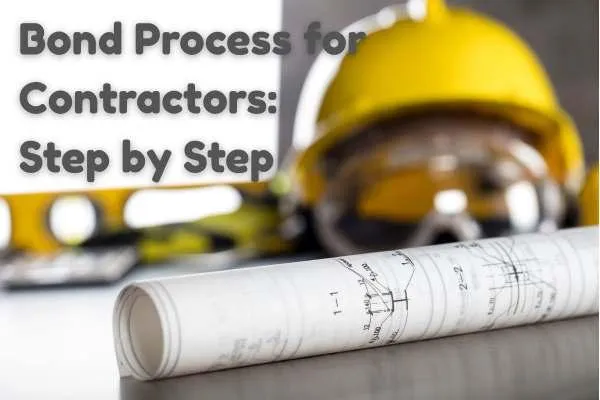
Bonding Process for Contractors – Step-by-Step Guide | BudgetBonds
Navigating the Bonding Process: Your Step-by-Step Guide to Approval
Picture this: you’re bidding on a major project, securing a new contract, or applying for a business license—and then you’re told you need a bond. What now? For contractors, business owners, and professionals across many industries, surety bonds are essential for winning jobs, earning trust, and staying compliant. Understanding the bonding process can save you time, money, and frustration.
Whether you’re a first-timer or just want a refresher, this guide lays out every step in the surety bond application journey, from your first question to final approval.
Understanding the Fundamentals: What Is a Surety Bond?
A surety bond is more than just a piece of paper—it’s a financial promise that you (the principal) will meet your obligations to another party (the obligee), backed by a third-party guarantor (the surety).
The Three Parties in a Surety Bond
Principal: The individual or business needing the bond (that’s you).
Obligee: The entity requiring the bond (often a government agency, project owner, or licensing board).
Surety: The company providing the bond and guaranteeing your commitment.
If you fail to meet your obligations, the surety compensates the obligee and then seeks reimbursement from you. This system builds trust, keeps projects on track, and protects everyone involved.
Why Are Surety Bonds Required?
Surety bonds are everywhere: from construction and auto dealers to notaries and mortgage brokers. Here’s why:
Protects the obligee from financial loss if you don’t deliver as promised
Demonstrates reliability and financial stability to customers, clients, or regulators
Enables you to bid on jobs, get licensed, or win contracts you couldn’t otherwise pursue
Common types of bonds include performance bonds, payment bonds, and license/permit bonds. Each one secures a different type of risk, but all provide peace of mind to those you work with.
Step 1: Identify the Correct Bond and Obligee
Before starting your surety bond application, confirm:
The exact type of bond required (performance, payment, license, etc.)
The obligee’s full name and requirements
The bond amount (often specified in contracts or legal documents)
Pro Tip: Always get this info in writing from the contract, licensing authority, or requesting party to avoid costly mistakes.
Step 2: Gather Documentation for Your Bond Application
The surety bond application process goes much smoother if you prepare in advance. Be ready with:
Your business details (legal name, address, years in business)
Personal info for all owners/partners
Details about the project, license, or obligation
Financial documentation: Recent business financial statements, tax returns, sometimes personal financials, and lists of major projects
Proof of licensing, insurance, or prior bonding history (if applicable)
Well-organized paperwork = a faster approval process and potentially lower bond rates.
Step 3: Submit Your Application to the Surety Company
Once your documentation is ready, complete the surety’s official bond application form. Many agencies offer online applications for convenience.
Step 4: Underwriting—How Sureties Assess Your Application
The surety company will now review your risk—this is called underwriting. They focus on “The Three Cs”:
1. Character
Your business reputation, credit score, history of fulfilling obligations, and references.
2. Capacity
Your experience, technical ability, workforce, and track record of handling similar projects or obligations.
3. Capital
Your financial strength: cash flow, assets, debts, and overall stability.
A strong showing in all three areas not only improves your chance of approval, but can also get you better premium rates.
Credit Check and Background Review
Expect the surety to run personal and business credit checks, and sometimes background checks. Strong credit (often 700+) is a major plus, but less-than-perfect credit doesn’t necessarily mean denial—other factors also count.
Contract or Obligation Analysis
The surety will carefully review the contract, scope, and potential risks. The more complex or higher the risk, the more documentation you’ll need.
Step 5: Approval and Bond Issuance
If approved, you’ll receive:
A premium quote: The cost is typically 1–3% of the bond amount, depending on risk and financials.
The official bond document: Double-check all details (names, amounts, obligee info) for accuracy.
You’ll need to sign the bond—sometimes in front of a notary—and then file it with the obligee or licensing agency.
Step 6: After Issuance—Ongoing Responsibilities
Being bonded isn’t a “set it and forget it” process.
Fulfill your obligations. Failing to do so can trigger a claim.
Keep your financials healthy and stay compliant. Inform your surety about major changes in business structure or finances.
Renew your bond as required. Many bonds are annual and need to be kept current for your license or contract to stay valid.
What Happens if There’s a Claim?
If someone believes you didn’t fulfill your obligation, they can file a claim. The surety investigates both sides. If the claim is valid and the surety pays, you must repay the surety (this is called indemnification).
Tip: The best defense is proactive communication and clear documentation throughout the life of your bond.
Conclusion: Why Mastering the Bonding Process Matters
The surety bonding process—identify the bond, prepare your documents, apply, get underwritten, and file your bond—might seem daunting at first, but following each step makes it straightforward.
Getting bonded isn’t just about checking a box for a job or license. It’s about earning trust, opening bigger opportunities, and proving you’re a professional others can count on.
Ready to get started or need help with a surety bond application? Contact our team or learn more about our bonding services. We’ll guide you every step of the way.

